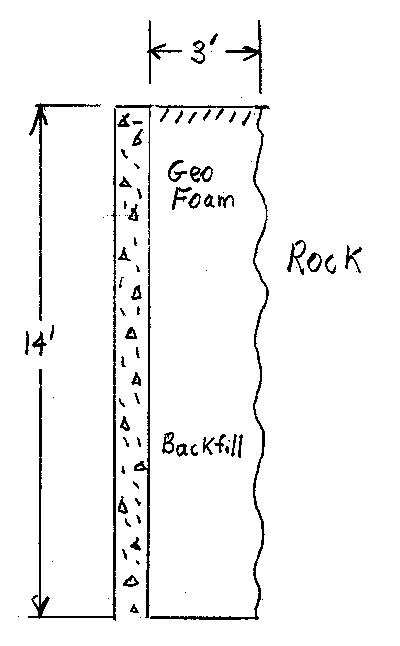pmtrevisan1
Structural
hello everyone...
something has me puzzled.
I have a fdn wall that is 14ft tall. to reduce pressure we are using geo foam above a certain height. question I have is in regards to the triangular soil pressure distribution. I was taught that due to archemedis paradox the pressure at the base is the same regardless of backfill width. well 25 years later I am questioning this. if you only have say a 3ft width of backfill do you still consider full triangular soil pressure or do I truncate it.
fyi the 3ft backfill width is due to bedrock if it's of any importance.
thanks for any insight.
p
something has me puzzled.
I have a fdn wall that is 14ft tall. to reduce pressure we are using geo foam above a certain height. question I have is in regards to the triangular soil pressure distribution. I was taught that due to archemedis paradox the pressure at the base is the same regardless of backfill width. well 25 years later I am questioning this. if you only have say a 3ft width of backfill do you still consider full triangular soil pressure or do I truncate it.
fyi the 3ft backfill width is due to bedrock if it's of any importance.
thanks for any insight.
p


![[idea] [idea] [idea]](/data/assets/smilies/idea.gif)